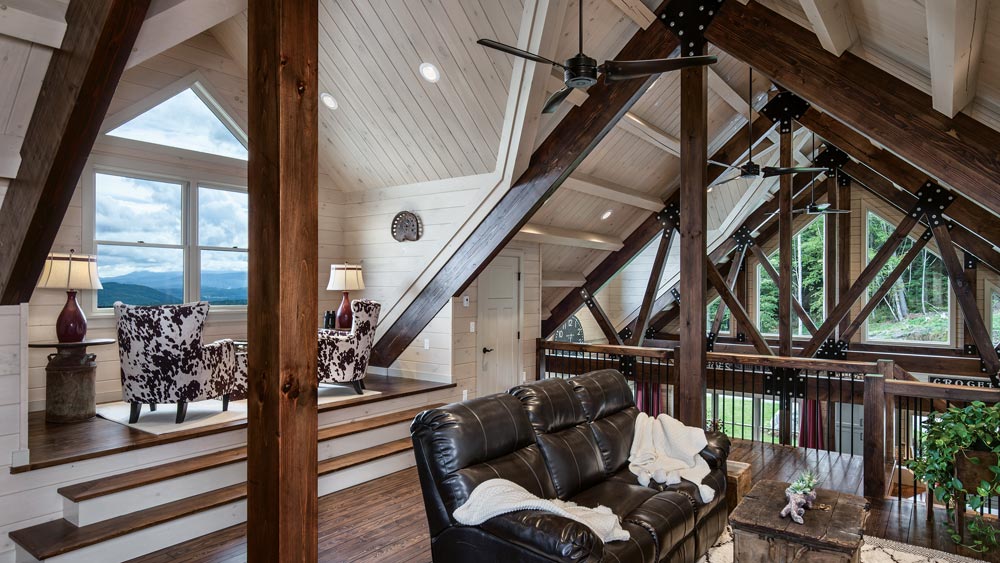
Photo: Roger Wade
Believe it or not, lofts are almost more commonly found in log and timber homes than they are in New York City high rises. It comes as no surprise: The soaring ceilings and intricate truss work beg you to come in closer for a better look. Plus, lofts are a great way to nab some extra square footage without expanding your footprint.
As straightforward as they seem, there are a few tricks to designing a loft that will be an asset to your log or timber home. Heed these four lofty goals:
Perfect Pitch.
When planning a log or timber home loft, take roof pitch into account. If you’re going to use the space as a media room, you’ll need a fairly large, flat, straight wall for the screen. For head clearance and bookshelves, a loft office or library will need walls at least 6 feet high before the roofline intersects. But if the space will be a kids’ playroom, less head clearance may be required for the little ones.Size Matters.
The most common spot to place a loft is directly above the kitchen so it looks onto the great room (this approach also visually defines the kitchen from the living area, while keeping the space cozy). But for optimal results, limit the loft square footage to one-third or less of the dimensions of the great room. Go too big, and you’ll lose the soaring-ceiling effect many log and timber homeowners seek.Look Out Below.
Consider how the loft relates to the space below it. An open loft with a delicate railing that looks out to the great room won’t serve you well as a guest room, due to the lack of privacy. To contain foot traffic noise, consider soundproofing the loft’s floors.Light Saver.
Skylights are a dramatic and popular way to allow natural light to filter into the loft, but also consider operational dormer windows as a way to usher both sunlight and fresh air into the space.




